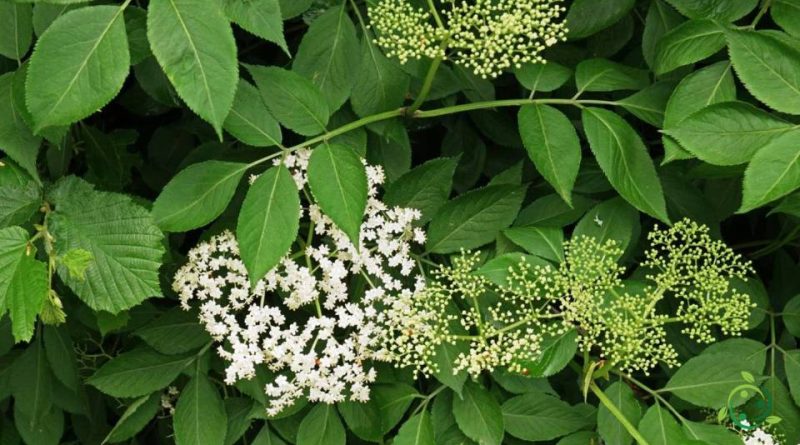How Elderberry is grown
How Elderberry is grown
The common elder (Sambucus nigra L.) is a plant of the Adoxaceae family, very widespread in Italy, from the plain up to 1400 meters above sea level, especially in ruderal environments (banks, roads, railways, etc.), in humid woods and on the banks of waterways.
It is a plant native to Europe and the Caucasus; today it is now a cosmopolitan species, widespread in all temperate areas of the continents.
The reproductive parts of Sambucus nigra appear between April and June; they are creamy white flowers, gathered in umbrella-like corymbs. The fruits are globose drupes, juicy when ripe, purple-blackish; contain from 2 to 5 monosperm pine nut-shaped kernels.
Cultivation –
The elderberry is not a plant that is ordinarily cultivated but its introduction can be interesting both for ornamental purposes and for medicinal-herbal uses.
For its cultivation, Sambucus nigra prefers sunny or partially sunny positions. However, to obtain a greater flowering, the plants should be placed in a more sunny position, where they can receive a few hours of direct light a day. However, they grow well even in semi-shaded positions but, in this case, the flowering will be less.
Sambucus nigra can withstand even rather harsh temperatures and does not present particular problems even if grown in areas where, in the summer season, the temperatures are rather high.
From the pedological point of view, it prefers moist and well-drained soils, even if the plant adapts to live in other types of soil as well, given its rustic character.
The ideal substrate is that formed by sand, soil and peat, so that it is well drained and soft.
As for the water supply, the specimens placed in the ground are satisfied with rainwater and can also withstand periods of drought, while those grown in pots need, during the spring and summer, moderate watering which do not create stagnant water.
Uses –
Elderberry is a plant known for the beneficial properties of its flowers and berries and is widely used in herbal medicine.
This plant is used for extracts from bark, leaves, flowers, fruits and roots which have long been used in the treatment of bronchitis, coughs, upper respiratory infections and fever.
It is used in herbal medicine for its diuretic, diaphoretic, antineuralgic, emollient, laxative, antifibrillating, emetic, antirheumatic, purifying and slightly anti-inflammatory properties, as well as for bronchial secretion. It is also recommended for common cold, respiratory tract infection, cough, pharyngitis, bronchitis, rhinitis, constipation or constipation, hemorrhoids, arrhythmia, urogenital tract infection or inflammation, cystitis, urethritis, urinary tract stones, retention edema, rheumatism, gout (helps eliminate uric acid), skin problems, dermatosis, rash, neuralgia, epilepsy, need to purify the body. Among the main organs on which it has a beneficial effect are the heart, kidneys, oral cavity, intestine, stomach, urinary tract, liver and immune system.
In addition, the flowers are used to prepare pancakes, homemade desserts and a delicious syrup. With the well-ripened fruits a fermented (elderberry wine) is obtained and syrups, jellies and jams can be prepared.
Elderberry pith was used in laboratory instrumentation and modeling.
Contraindications –
Remember, however, that apart from the fruits and flowers, which generally have beneficial effects, all the rest of the plant (including leaves and seeds) is poisonous since it contains the glycoside sambunigrina (with chemical formula: C14H17NO6).
The intake of elderberry can affect the activity of immunosuppressive drugs because it can increase the activity of the immune system, so it is advisable to contact your doctor to assess their compatibility. Furthermore, the application of fresh leaves and flowers to the skin causes violent irritation and erythema.

